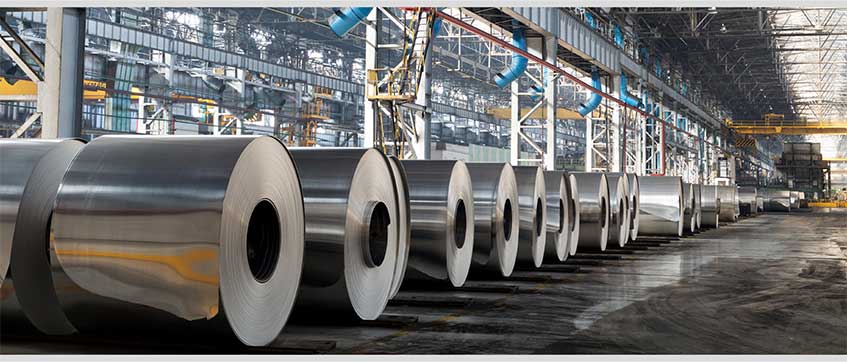
By Mike Hook, Sales & Marketing Director, PRAB
For workplaces in the United States and many other industrialized countries, “cleanliness is a virtue” is more than just an old adage—it is a mandate. The U.S. Department of Labor’s Occupational Safety and Health Administration states that good housekeeping not only creates a cleaner, safer workplace, but also promotes positive behaviors, habits and attitudes1.
OSHA regulations require that each working surface be cleared of debris, including solid and liquid waste, at the end of each shift or task. However, in order to fully realize the benefits of a clean workplace, the administration recommends that good housekeeping be maintained throughout the course of the job and workday. This enables an operation to avoid the physical consequences to workers that can result from poor housekeeping, including:
Workplace safety training provider SafetySmart identifies two primary elements of good housekeeping: keeping materials, tools and equipment in their designated places and frequently removing debris and waste from work areas2. The second element is especially important in the metalworking industry, where large volumes of solid and liquid material byproducts can accumulate quickly and obstruct workflow areas.
Manual removal is simply not a feasible or cost-effective solution to continuous waste removal throughout a workday. This is one possible explanation why metalworking operations are frequently at risk of violating OSHA’s 19100022 standard for general housekeeping requirements. During the period from October 2017 to September 2018, OSHA issued 623 citations for violations of this standard, totaling close to $2 million in penalties. The Fabricated Metal Product Manufacturing industry was second on the list with a total of 50 violations and $124,894 in penalties.3

Of course, there are other significant costs associated with poor housekeeping, such as worker’s compensation claims, personal injury litigation and the worst-case scenario, death or dismemberment. In a 2016 incident at a machine shop in Columbus, Wisconsin, a worker who was cleaning out scrap metal pieces from under a laser cutter was killed when the machine turned on unexpectedly and pinned him4.
The objective for any metalworking operation should be to create a culture of cleanliness and to maintain a zero-incident safety rate. Both goals are attainable with the implementation of automated conveying, scrap processing, fluid recycling, and wastewater treatment systems.
In this white paper we will:
For most industrial manufacturing applications, the ultimate objective is to machine as many parts as possible in the shortest amount of time. In the metalworking industry, this involves reducing giant blocks of metal down to 10-20 percent of the weight and size of the original piece.
For example, an operation that makes 300-pound parts from 3,000-pound blocks of aluminum is left with 2,700 pounds of aluminum shavings per part, which must be removed from the gantry tables and the shop floor as quickly as possible to maintain a clean work area. A facility that fills dozens or hundreds of orders for the same part on a daily basis faces a considerable clean-up job, which is made even more daunting by the presence of cutting fluids.
Spraying heavy-flow flood coolant on the tool is a critical part of the scrap removal process in high-rate applications. This method sends the scrap away from the tool while also helping to control high temperatures, which speeds up the cutting process and extends the life of expensive tooling.
When you consider the size of these milling machines, the sheer tonnage of chips and turnings they produce and the volume of coolant required to deal with the scrap, it becomes clear how quickly open floor space can disappear. When that happens, a facility becomes vulnerable to housekeeping violations and the even costlier safety-related consequences that can result.
When you consider the size of these milling machines, the sheer tonnage of chips and turnings they produce and the volume of coolant required to deal with the scrap, it becomes clear how quickly open floor space can disappear. When that happens, a facility becomes vuMany of those consequences are associated with the manual handling of heavy, sharp metal scrap—which can cause lacerations and several other musculoskeletal injuries— and both physical and airborne exposure to metalworking fluids. The OSHA’s Metalworking Fluids: Safety and Health Best Practices manual identifies good housekeeping as an important control measure to prevent operator contact with MWFs, which have been implicated in health problems such as:erable to housekeeping violations and the even costlier safety-related consequences that can result.
Large volumes of scrap metal and spent fluids are a reality for modern metalworking applications. Dealing with them manually is neither possible nor safe, given the quantities most modern operations generate and the inherent hazards associated with each. Making automated systems an essential part of a housekeeping program is the answer to eliminating dangerous, cluttered and non-compliant workspaces that can negatively impact so many essential functions and daily processes.
Outside of the obvious safety and regulatory benefits of automated conveying, scrap processing, fluid recycling and wastewater treatment systems, this equipment can help an operation tighten controls and procedures, such as:
automate the removal of chips and coolant away from the point of production for optimum production cycles, longer run times, increased worker safety and improved housekeeping.
reduce dangerous metal turnings and bulky wads into shovel-grade chips to maximize storage space, prevent equipment damage by removing occasional solids and minimize housekeeping maintenance.
extend the life of water-soluble coolant and washwater by removing free-floating and mechanically dispersed tramp oil from individual machine sumps, central systems and wash tanks. This equipment provides an additional safeguard against bacterial growth.
Separate organics, emulsified oils and suspended solids from process water, incoming water, wastewater and metalworking coolant, effectively reducing oily water volumes by as much as 98% without the use of chemical additives.
compress lose turnings and swarf into near-solid dry pucks for recycling, giving you more floor space and a cleaner, more environmentally friendly shop as well as more value from the scrap dealer.
remove tramp oils and suspended solids from contaminated coolants. These systems contribute to cleanliness by helping to control bacteria while also minimizing employee exposure to hazardous lubricants.
concentrate and remove salts, heavy metals and a variety of hazardous components, reducing employee exposure to those components while also reducing wastewater volumes and virtually eliminating haul-away costs.
With any or all of these systems in place, a shop can experience a number of additional benefits that go beyond achieving a clean, orderly, safe workplace. Two of the biggest are:
Extending Equipment Life
Maintaining equipment in order to avoid unnecessary downtime, repairs or replacement is a must in industrial manufacturing. Every operation wants to prolong the life of its equipment for the highest output and fastest return on investment possible.
Part of this involves the implementation of a housekeeping program that incorporates a set schedule for employees to regularly inspect equipment and evaluate whether automated processes are in good working order. Incorporating this additional layer of checks and balances—which can include testing fluid and lubricant levels, inspecting signs of wear and tear, and confirming components are clean and clear of foreign objects or obstructions—provides an added measure of protection beyond scheduled maintenance.
There are also automated filtration processes that can help extend the life of your equipment on their own. In the case of grinding applications, the addition of a paper bed filter, which is designed to filter fine particulate matter from oil and fluids, can help to prolong coolant and tool life.
Operating at Peak Efficiency
Saving more space, time and money are worthy goals that can be achieved with a more proactive and innovative approach to the cleaning and removal of workplace clutter.
By implementing housekeeping system innovations such as automated conveyors, scrap processing equipment, fluid recycling systems and wastewater treatment solutions, metalworking operations can boost productivity by limiting the time machinists are required to clean or remove material and increase throughput by speeding up essential functions of the manufacturing process.
When employees don’t have to stop what they’re doing to clean up scrap or replace fluid after every production run, an operation can reduce costly bottlenecks. Furthermore, in addition to reducing or eliminating manual labor, automated waste systems can lead to more substantial sources of revenue when scrap metal separated and compacted with precision and spent fluid is recycled or reused for an optimum return on investment.
Just as good personal hygiene is a reflection of self-respect and self-esteem, good housekeeping practices translate to overall respect for the workplace and those who operate within it. If an operation avoids cleaning and organizing the plant or delays the removal of debris and other obstructions from work zones, it can expect to experience a steady decline in productivity and an increase in the costly consequences of poor housekeeping.
When implemented as part of an overarching housekeeping and waste volume reduction plan, automated systems for conveying, scrap processing, fluid recycling and wastewater treatment have the capacity to greatly reduce the need for workers to abandon production duties and take on the dirty and often dangerous jobs that are necessary in a metalworking operation. This alone can have a markedly positive effect on employee morale and engagement—two key ingredients for performance and success.
While there are clear financial advantages in terms of risk avoidance and deferred maintenance, good housekeeping practices have the potential to strengthen a company’s reputation, both within the plant and externally in the marketplace—which can be equally beneficial to the bottom line.

Mike Hook is the Sales & Marketing Director for PRAB and has more than 15 years of mechanical design and application experience. PRAB is a leading manufacturer of engineered conveyors and equipment for processing turnings, chips and metalworking fluids. PRAB also designs and builds industrial wastewater recycling systems.
1 OSHA, Process: Housekeeping Safety – https://www.osha.gov/dts/maritime/sltc/ships/housekeeping/intro.html
2 SafetySmart, Poor Housekeeping by the Numbers – http://safetysmart.com/Article.aspx?id=18209&articleId=103818#.XHQmoVJ7nOR
3 OSHA, Industry Profile for OSHA Standard 19100022 – https://www.osha.gov/pls/imis/industryprofile.stand?p_esize=&p_stand=19100022&p_state=FEFederal&p_type=3
4 Industrial Equipment News, Teen Injured in Machine Shop Accident Dies – https://www.ien.com/safety/news/20827161/teen-injured-in-machine-shop-accident-dies
5 OSHA, Metalworking Fluids: Safety and Health Best Practices Manual – https://www.osha.gov/SLTC/metalworkingfluids/metalworkingfluids_manual.html